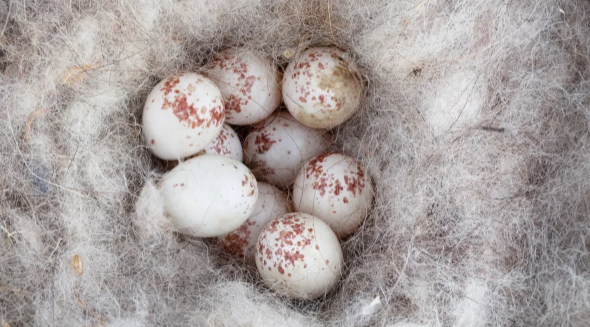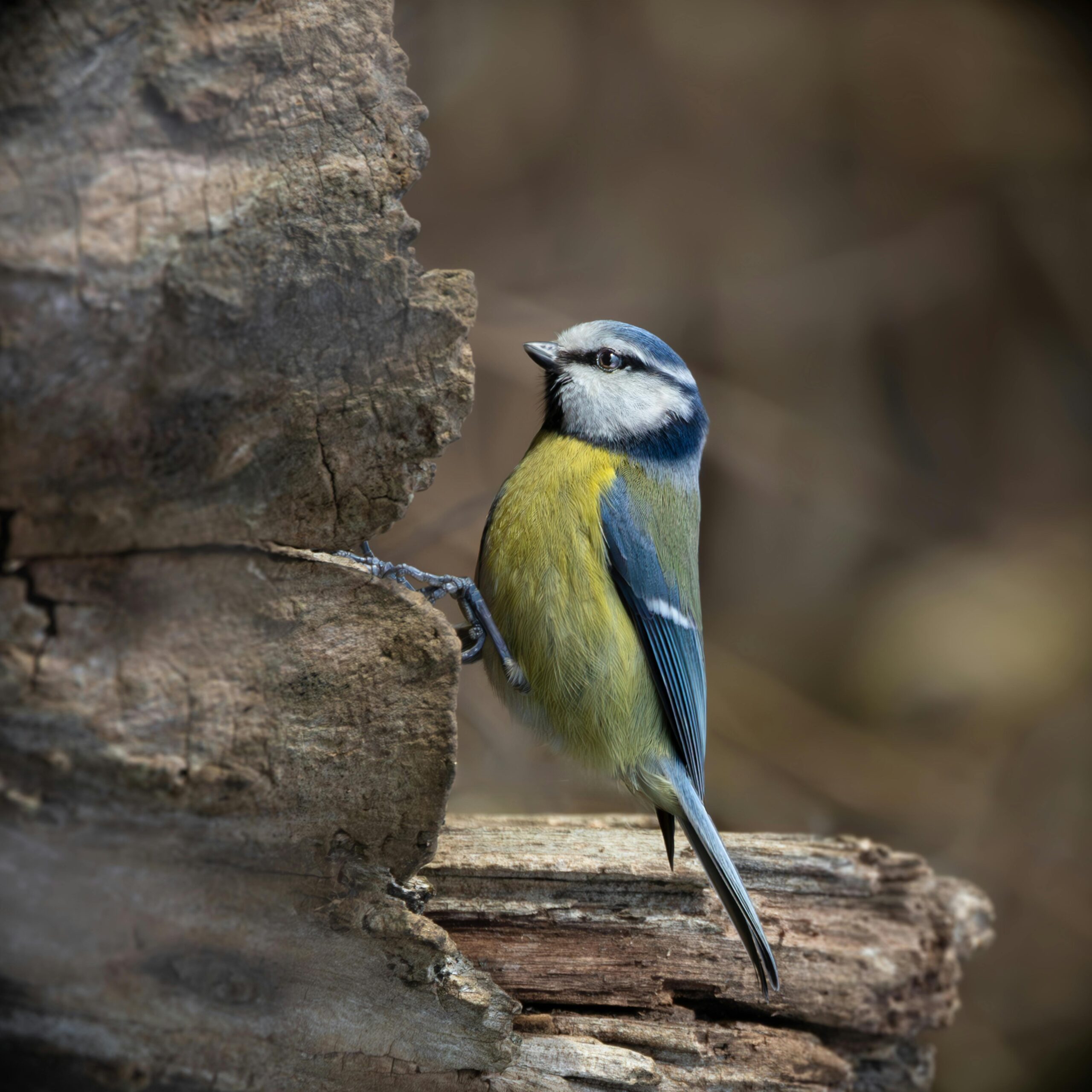Blue Tit Nesting Season? A Comprehensive Guide
If you’ve ever watched a blue tit flit about your garden, you know just how delightful these little birds can be. With their vibrant blue and yellow feathers, they’re like tiny bursts of sunshine, brightening up even the gloomiest days. Alongside other garden favorites like the long tailed tit, blue tits bring life and color to our outdoor spaces. But have you ever wondered when these charming birds start nesting? Let’s explore the blue tit nesting season and see how you can lend a hand during this crucial time.
When Do Blue Tits Start Nesting?
The Nesting Season Timeline
Blue tits typically kick off their nesting season in early spring. Most of them start getting busy with nest-building around March and April, but this can vary a bit depending on the weather and how much food is available. Once they have a cozy nest ready, the female will start laying eggs, usually by April or early May.
Here’s a quick rundown of their nesting timeline:
- March to April: Nest building begins. This is when you’ll notice them gathering materials like moss and feathers.
- April to Early May: Egg-laying starts, with females laying one egg per day until they have a full clutch.
- Mid-May: Incubation kicks in, lasting about two weeks.
- Late May to Early June: Chicks hatch and both parents start their feeding marathon.
- June: The chicks, now ready for the world, take their first flight and leave the nest.
Factors That Influence Nesting Timing
Several factors can influence when blue tits start nesting:
- Weather Conditions: A warm winter and early spring can lead to earlier nesting, while cold snaps can delay the start.
- Food Availability: When there’s plenty of food like insects and caterpillars, blue tits are more likely to start nesting sooner.
- Predation Risks: Areas with more predators might see blue tits delaying nesting to ensure the safest conditions for their chicks.

The Nesting Process: From Building to Fledging
Nest Building
Blue tits are master nest builders! They usually pick tree holes, nest boxes, or small crevices to build their nests. The female does most of the work, using all sorts of materials like moss, feathers, grass, and wool to make a snug and secure home for her eggs. This can take anywhere from several days to a few weeks, depending on how quickly she can gather materials and how cooperative the weather is.
Egg Laying and Incubation
Once the nest is ready, the female will lay a clutch of eggs, typically between 7 and 12. She lays one egg a day, usually in the morning, until the clutch is complete. After she’s laid all her eggs, she settles in for incubation, which lasts about 13 to 15 days. Meanwhile, the male is on food duty, bringing her plenty of tasty snacks.
Chick Rearing
When the chicks hatch, both parents spring into action to feed their hungry brood. They make countless trips back and forth, fetching insects and caterpillars to keep the chicks well-fed. It’s a busy time, but after about three weeks, the young blue tits are ready to fledge and take their first flights.
How You Can Help Blue Tits During Nesting Season
- Provide Nest Boxes: Set up some nest boxes in your garden before the nesting season begins. Make sure the entrance hole is around 25mm wide to keep out larger birds.
- Offer Food and Water: Help blue tits by putting out high-protein foods like mealworms and sunflower hearts. A source of fresh water for drinking and bathing is also essential.
- Avoid Disturbance: Try to keep a respectful distance from nests and avoid loud noises or activities that could disturb the birds.
- Preserve Natural Habitats: Keep your hedges, trees, and shrubs in good shape to provide natural nesting sites and foraging areas.
Fun Facts About Blue Tit Nesting
- High Success Rates: Blue tits often have a high number of chicks successfully fledging each year, especially when food is plentiful and the weather is kind.
- Adaptive Nesters: Blue tits are pretty adaptable and can change their nesting habits based on environmental conditions to make sure their chicks have the best chance of survival.
- Chatterboxes: During nesting season, blue tits are quite vocal, using a range of calls to communicate with each other, from alarms to soft contact calls between mates.
Embrace the Blue Tit Nesting Season
The blue tit nesting season is a magical time to observe nature in action. By understanding their habits and providing a little support, you can enjoy watching these charming birds raise their young right in your garden. Plus, it’s a great way to connect with nature and learn more about the wildlife around you.
For more tips on attracting blue tits to your garden and helping them during nesting season, check out the RSPB website for expert advice and resources. Happy birdwatching!
Conclusion
Understanding when blue tits start nesting and their nesting habits is essential for bird enthusiasts and conservationists. By providing suitable nesting sites, food, and protection from predators, we can support blue tit populations and enjoy their delightful presence in our gardens and natural spaces. This guide equips you with the knowledge to observe and assist these charming birds effectively.
FAQs
1. When do blue tits start building nests? Blue tits typically start building nests in early spring, around March or April, depending on the climate and food availability.
2. How long does it take for blue tits to build a nest? The nest-building process can take several days to a few weeks, with the female blue tit doing most of the construction.
3. What materials do blue tits use for nesting? Blue tits use materials such as moss, grass, feathers, wool, and hair to build their nests, creating a soft and insulated environment for their eggs.
4. How many eggs do blue tits lay? A typical clutch size for blue tits ranges from 6 to 12 eggs, with 8 to 10 being the most common.
5. How long is the incubation period for blue tit eggs? The incubation period for blue tit eggs is about 14 days, during which the female keeps the eggs warm and turns them regularly.
6. What do blue tit chicks eat? Blue tit chicks primarily eat insects, particularly caterpillars, which provide the necessary protein for their growth and development.
7. How can I attract blue tits to my garden? You can attract blue tits by providing nest boxes, planting native vegetation, offering supplementary food such as mealworms and sunflower seeds, and ensuring a clean water source.
8. Are blue tits territorial during nesting season? Yes, blue tits can be territorial during nesting season, defending their chosen nest site from other birds and potential threats.
9. How can I protect blue tit nests from predators? To protect blue tit nests, use predator-proof nest boxes, place them in safe locations away from easy access by cats and squirrels, and avoid disturbing the nest area.
10. When do blue tit chicks fledge? Blue tit chicks typically fledge about 18 to 21 days after hatching, when they are ready to leave the nest and start exploring their surroundings.

